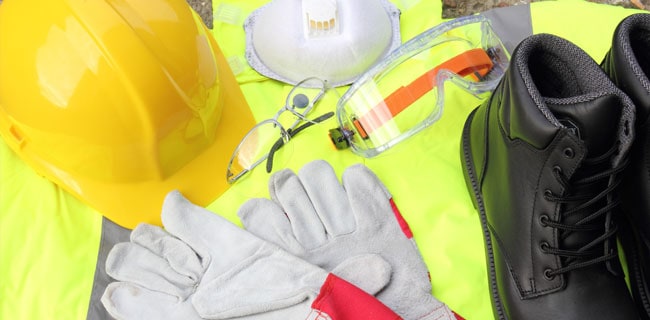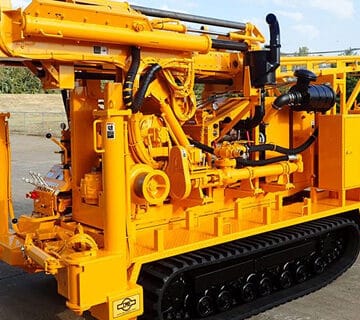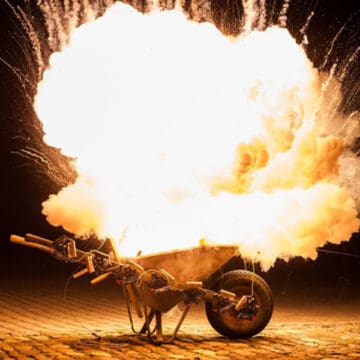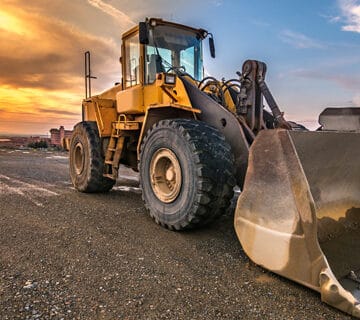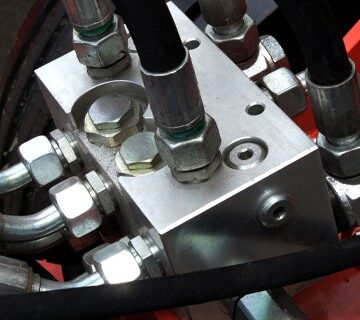For years, the St. Louis and the surrounding areas were home to a plethora of quarries and mines that fed the clay, coal and limestone needs that quite literally built the foundation of St. Louis. Today, Missouri leads the way in fire clay, lead, lime, montmorillonite and tripoli production and is a major producer of crushed stone, cement and zinc (USGS). Common clay, sand, gravel and silver are also largely produced in the state.
Mining is risky business. There’s seemingly no end to the dangers a worker could encounter on any given day. Worker safety is a major concern in mining; a company’s choice of personal protective equipment for their workers could potentially save lives.
We pay attention to the issues that face our local workforce here in the St. Louis region and beyond. Here are some important safety measures recommended within the mining industry:
Common Safety Issues in Mining Industry
The mining industry is no stranger to the dangers that lurk just below the surface. Other than the catastrophic dangers that can result from a cave-in, explosion or accident, miners are at increased risk of respiratory illnesses, excessive noise doses, vibration and chemical exposure. These are just a few of the many dangers that today’s miner faces:
Exposure to Crystalline Silica
Not long ago, Occupational Safety and Health Administration (OSHA) issued its final rule outlining crystalline silica exposure for general industry and maritime. Crystalline silica is a known cancer-causing agent that is found in sand, stone and artificial stone and can trigger silicosis, a disease that scars the lungs. The final rule will be rolled out over the next few years and requires employers to use engineering controls and work practices like vacuums, proper ventilation and water to reduce exposure levels.
In response to the silica regulation, Mine Safety and Health Administration (MSHA) is currently exploring exposure limits for work zones with high levels of quartz dust, the most common form of respirable crystalline silica. Their goal is to gain new information on best practices, dust control methods, engineering control, administrative controls and personal protective equipment (PPE) that can protect miners more effectively.
Exposure to Coal Dust
Many have heard the term “black lung” or “miner’s lung.” It’s also called pneumoconiosis and is the result of long-term exposure to coal dust. It’s similar to silicosis and leads to inflammation, fibrosis and necrosis or complete tissue death. Black lung disease is preventable, however. That’s why in 2014, the Mine Safety and Health Administration put a landmark rule into place to help protect miners from the dangers of coal dust, including lowered concentration limits, sampling procedures and regular examinations.
Exposure to Lead
Lead is a toxic metal that is often combined with other metals to produce alloys used in making batteries, ammunition and other metal parts. Because it is toxic, the use of lead has been greatly reduced, but remains a common hazard in industries including construction, mining and manufacturing.
Health problems from short-term lead exposure can include abdominal pain, constipation, headaches and neuropathy, while long-term lead exposure can cause reproductive disorders, seizures, memory loss, delirium, kidney disorders and even death. Children are most at risk from exposure, even in small amounts (CDC).
How Workers Protect Themselves with the Right PPE
Workers should arm themselves with proper personal protective equipment (PPE) anytime they are working near these hazards. The OSHA standard CFR 1910.132 states that in general industry, shipyard employment and construction, employers must provide workers with the proper PPE they need to perform their jobs safely.
Why is PPE so important? PPE is the last line of defense against occupational hazards like these. After hazards are properly evaluated and either eliminated, substituted or engineered out, we are then left with two options. We can either apply administrative controls and change the way we work around those hazards, or we can protect the worker with PPE.
Here are some recommended personal protective equipment options that offer additional safety measures in mining, including protection against the dangers involved in coal, stone, clay and glass sand mining in the St. Louis area:
Respirators
If you are working in poorly ventilated areas or in areas where dangerous hazards could be present, you should be wearing a respirator that can protect you from exposure to dangerous particulates, dusts, organic vapors and gases commonly found in mines. Make sure a competent person evaluates the hazards to understand the permissible exposure limits (PEL) and employs the hierarchy of controls before choosing a respirator.
Hand Protection
Workers should have hand protection and safety gloves that protect against any hazards that they may face on the job. This includes protection against impacts, cuts, lacerations, chemical exposure or potential pinch points.
Safety Goggles
Safety goggles are recommended in mining applications because of the common exposure to chemicals used in mining as well as exposure to dusts, silica and asbestos or projectiles. By preventing contact with the eyes and skin, workers can limit the risk of hazardous materials from entering the bloodstream or causing irreparable vision damage.
Protective Clothing & Work Boots
Protective clothing and footwear like work boots are also important to worker safety when exposed to mining hazards. Disposable clothing like coveralls, shoe coverlets and other disposable protective clothing options are ideal when proper laundering isn’t an option. Remember to dispose of contaminated clothing properly (see OSHA CFR 1910.1025). The last thing a worker wants to do is bring contaminated items into their vehicle or home.
Hearing Protection
Mining is noisy work. Exposure to high levels of noise over the Permissible Exposure Limits (PEL) can lead to short-term and long-term health risks. Hearing protection like earplugs, earmuff or hearing bands can help filter the noise dose down to safe levels.
How can Superior Industrial Supply help you work safer?
Superior Industrial Supply carries safety and PPE equipment from names like 3M™, Gateway Safety, Spilltech and more. Our team is ready to help you with your industrial and hydraulic hose needs, as well as your industrial and safety supplies. If we can’t get you what you need, we’ll help you find it. Stop in to our St. Louis location or call 800-783-6501 and we’ll get you squared away.

Did you know?
Metabo, a Superior Industrial Supply partner, offers a HEPA-filtered vacuum that meets or exceeds OSHA requirements for mining operations. Learn more about Metabo’s OSHA-compliant silica solutions. (And then give us a call to place your order.)

